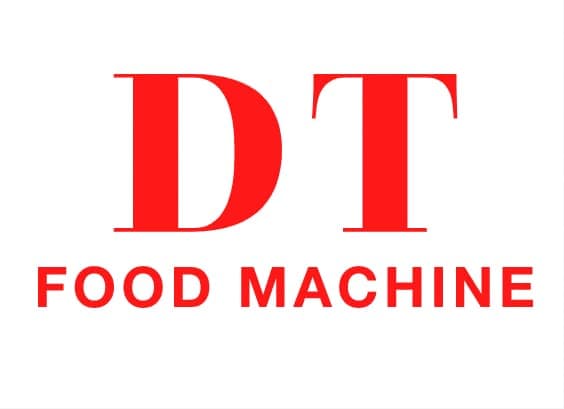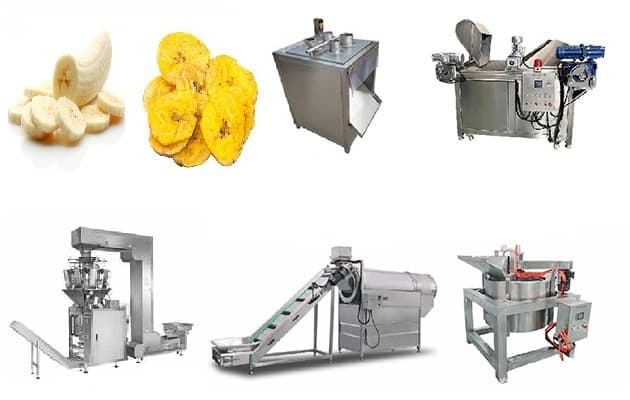Le patatine di banana sono tra le opzioni di snack sane più popolari in tutto il mondo. Croccante, gustoso, E con una lunga durata, sono consumati in tutta l'Asia, Africa, e l'America Latina, E la loro domanda sta crescendo in Europa e Nord America. Se sei un imprenditore o un investitore pianifica di entrare nel settore manifatturiero alimentare, a banana chips factory is a profitable and scalable venture. In questa guida, we will walk you through everything you need to know to start a banana chips production business—from selecting machinery to estimating setup costs.
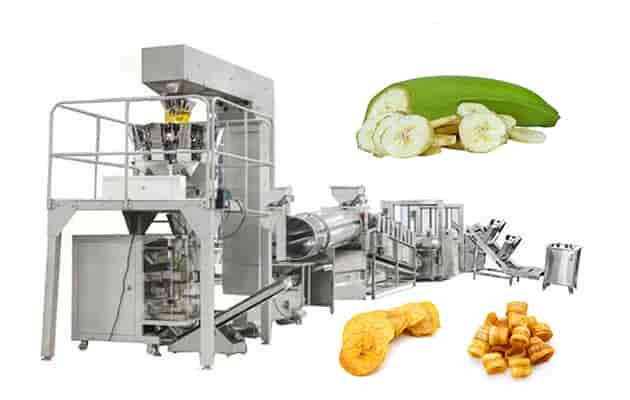
1. Market Potential for Banana Chips
IL global banana chips market is projected to grow at a CAGR of over 6% in the coming years. The growing demand for healthy, plant-based snacks, along with increasing urbanization and working-class populations, contributes significantly to this trend. Inoltre, banana chips have huge export potential due to their longer shelf life and demand in the vegan and gluten-free snack markets.
Key Market Trends:
- Rise in healthy snacking trends
- Increasing demand for packaged food
- Growth of e-commerce and direct-to-consumer brands
2. Types of Banana Chips
Before starting your factory, decide which type of banana chips you plan to produce:
2.1 Fried Banana Chips
- Deep-fried in vegetable oil
- Popular in Southeast Asia, Africa, and India
- Variants: salted, speziato, dolce
2.2 Baked Banana Chips
- Healthier, lower oil content
- Preferred in Western countries
2.3 Freeze-Dried Banana Chips
- Premium category
- Leggero, durata lunga
Your choice will affect the machinery, production line design, and target markets.
3. Step-by-Step Banana Chips Production Process
- Raw Banana Selection
- Saba, Nendran, or Plantain bananas are preferred.
- Peeling
- Manual or mechanical banana peeling machines.
- Slicing
- Uniform slicing ensures even frying and consistent texture.
- Lavaggio
- Removes starch and impurities.
- Sbiancante (Opzionale)
- Enhances crispness and color.
- Frying/Baking
- Deep fryers or hot air ovens, depending on chip type.
- Disoleazione (for fried chips)
- De-oiling machines help reduce oil content.
- Seasoning
- Flavors such as cheese, spicy chili, or honey.
- Raffreddamento
- Conveyor-type cooling systems.
- Confezione
- Automatic pouch packing machines with nitrogen flushing to maintain freshness.
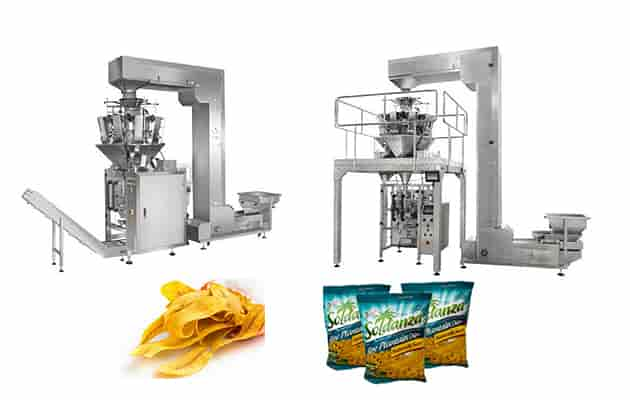
4. Banana Chips Production Line & Required Machinery
Below is a list of the essential machines you will need to build a fully automatic banana chips processing plant:
4.1 Macchina pelatrice
- Capacità: 300–1000 kg/h
- Corpo in acciaio inossidabile
4.2 Banana Slicer Machine
- Spessore regolabile
- Rotary blade or centrifugal type
4.3 Lavatrice
- Bubble washer or rotary drum type
4.4 Fryer Machine
- Friggitrice in lotti: Suitable for small-scale setups
- Friggitrice continua: Best for industrial scale
- Oil filtration and temperature control systems included
4.5 Macchina per de-oiling
- Centrifugal system to reduce excess oil
4.6 Macchina per condimenti
- Drum-type mixer for even coating
4.7 Macchina da imballaggio
- Pesatrice multitesta + vertical form fill seal (Vff) macchina
- Nitrogen flushing system for freshness
Attrezzatura opzionale:
- Bianches
- Rilevatore di metalli
- Date printer
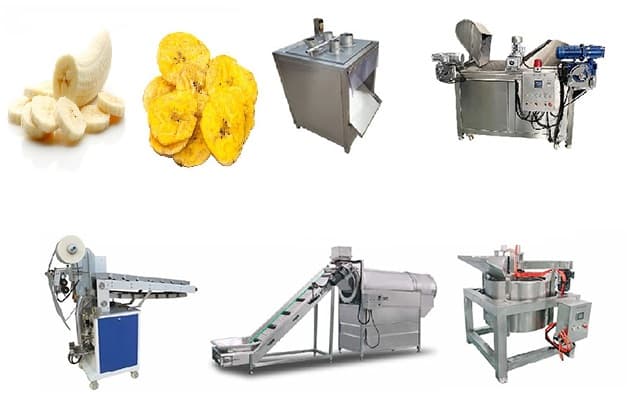
5. Layout Design for Banana Chips Factory
Small-Scale Plant Layout (500 kg/day)
- Space Requirement: 100–200 sqm
- Semi-automatic line
Medium-Scale Plant Layout (1000–3000 kg/day)
- Space Requirement: 500–800 sqm
- Fully automatic with continuous fryer
Large-Scale Industrial Layout (5000+ kg/day)
- Space Requirement: 1000+ sqm
- Turnkey project with full automation, oil recycling system, waste management, ecc.
6. Investimento & Ripartizione dei costi
| Articolo | Costo stimato (Dollaro statunitense) |
|---|---|
| Banana Chips Machines (complete line) | $30,000 - $120,000 |
| Configurazione di fabbrica (edificio, utility) | $20,000 - $80,000 |
| Labor and Staff (first 6 mesi) | $10,000 - $25,000 |
| Materie prime & Confezione | $5,000 - $15,000 |
| Certificazioni & Licenze | $2,000 - $5,000 |
| Marketing & Marchio | $3,000 - $10,000 |
| Investimento totale stimato | $70,000 - $250,000 |
Costs vary based on production capacity, location, e livello di automazione.
7. Licensing & Regulatory Requirements
General Licenses Required:
- Business Registration
- Food Safety License (PER ESEMPIO., FDA, FSSAI)
- Export License (se vendi a livello internazionale)
- Environmental Clearance
Make sure to comply with local and international food safety standards such as HACCP, Iso 22000, ecc.
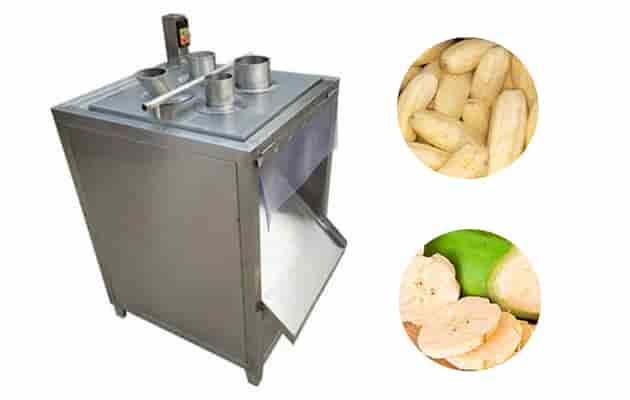
8. Marketing & Distribution Strategy
To scale your banana chips business, plan both B2B and B2C channels:
B2B (Bulk Sales)
- Supermercati & catene di vendita al dettaglio
- Distributors & wholesalers
- Export to foreign countries
B2C (Retail Packaged Sales)
- Piattaforme di commercio elettronico (Amazzonia, Shopee)
- Your brand website
- Social media ads
Tips:
- Use attractive packaging with transparent fronts
- Highlight “healthy snack”, “gluten-free”, O “vegan” etichette
9. Margine di profitto & ROI
Banana chips offer high profit margins of 30% A 50% depending on efficiency, waste control, and branding. Most small to medium factories achieve ROI within 12–24 months.
10. Tips for Success
- Invest in high-quality stainless steel machines
- Optimize oil usage and recovery
- Innovate with new flavors and packaging
- Get customer feedback early to refine product
- Focus on branding to stand out in a crowded snack market

Conclusione
Starting a banana chips factory is a promising business opportunity with strong demand and export potential. By choosing the right machinery, setting up a smart layout, and implementing effective marketing, you can build a profitable snack manufacturing enterprise. Whether you’re starting small or planning a large industrial setup, the key to success lies in product consistency, quality control, and branding.
Need Help with Banana Chips Machinery?
We are a leading manufacturer of banana chips machines and turnkey production lines. Contact us today to get a customized quote and plant layout tailored to your needs!
